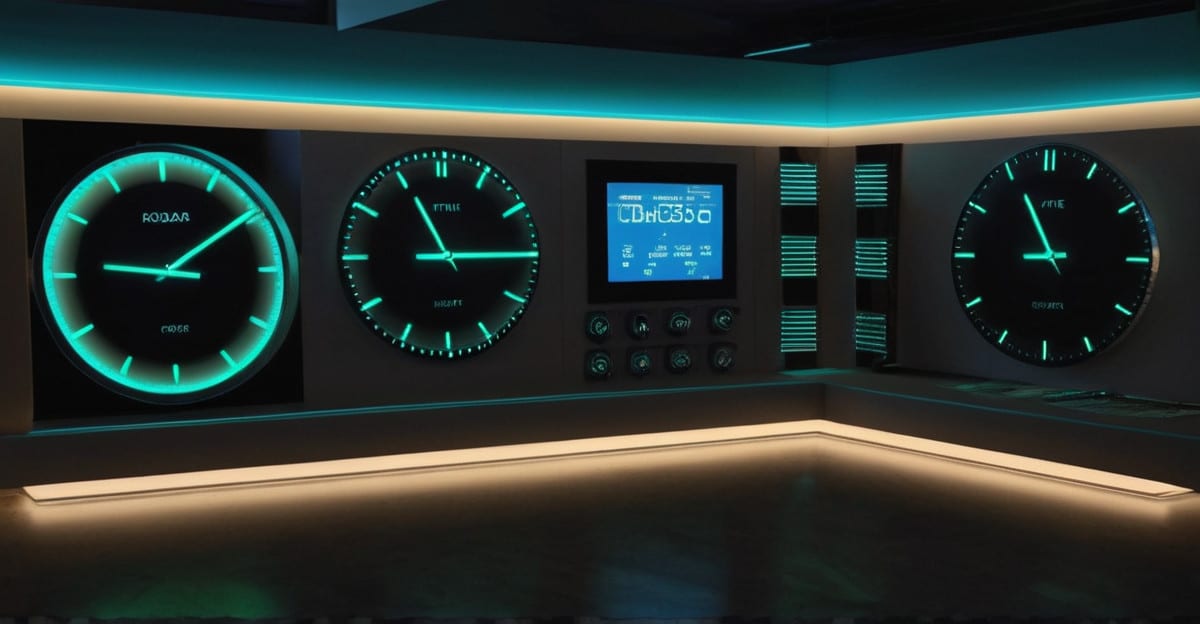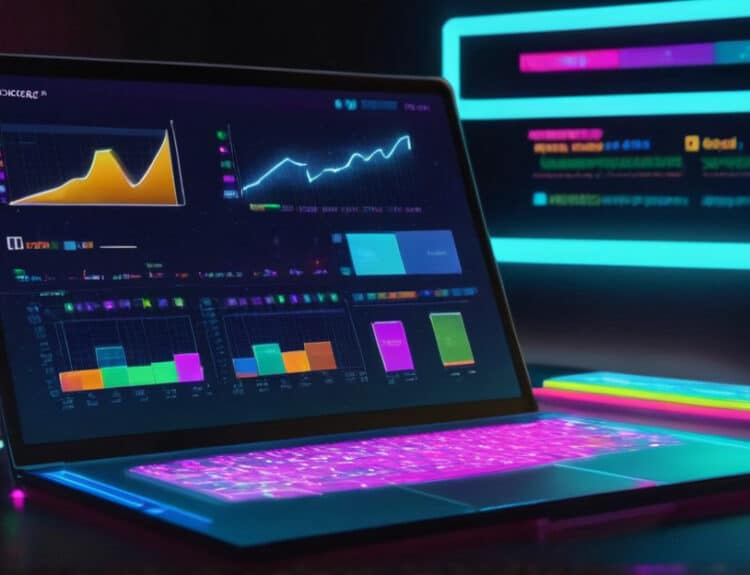Introduction to Cutting-Edge Time Clocks
Effective time management solutions are more important than ever in the dynamic world of remote work. Explore the world of state-of-the-art time clocks—creative solutions meant to improve and simplify remote work. By 2024, these cutting-edge tools will completely change how teams, no matter where they are situated, keep track of their hours worked, manage projects, and remain productive.
The old-fashioned 9 to 5 workplace setting is gradually disappearing. As more businesses embrace remote work, it’s critical to implement solutions that maximize this shift while also making it easier. Modern time clocks come with a ton of capabilities, like real-time tracking and smooth project management software integration, to make sure every second is counted and used effectively.
We will examine the top time clocks for 2024, go over their features, and show you how they might improve your remote work environment in this in-depth review. These solutions are made to meet all your time management requirements, regardless of whether you own a small business, are a freelancer, or are a member of a large distributed team. Now let’s get started and see how these cutting-edge technologies may increase your productivity and efficiency.

Why Time Clocks are Essential for Remote Work
Time management is one of the biggest issues that have arisen with the shift to remote work. Without the routine of a real office, workers may find it difficult to keep track of their hours, which could result in lower output and even burnout. state-of-the-art time clocks are useful in this situation.
Time clocks offer more than just the ability to punch in and out; they also give you a detailed report on how your time is being spent. Through precise monitoring of hours worked, breaks taken, and activities accomplished, these solutions provide insightful data that can support remote teams in managing their calendars. In a remote work environment, this degree of openness is essential for building trust and accountability between employers and employees.
Additionally, time clocks can be used to spot trends and patterns in employees’ work habits. Is productivity peaking at particular times of the day, for example? Do any certain jobs always take longer than anticipated? Teams are able to increase overall productivity and optimize workflows by using this data to inform their decisions.
Time clocks have positive effects on productivity in addition to being essential for compliance. There are labor rules in several areas that mandate precise timekeeping of work hours. Businesses may make sure they comply with these regulatory obligations and prevent fines and conflicts by utilizing sophisticated time tracking systems. All things considered, the incorporation of state-of-the-art time clocks into a remote work setting is revolutionary, offering the framework and knowledge required to prosper in a dispersed workforce.
Top Features of Cutting-Edge Time Clocks
The characteristics that will offer the most value should be taken into account when choosing the ideal time clock for your remote staff. The following are some of the best attributes of modern time clocks that will transform your remote work environment:
1. Tracking in Real Time
Employees can record their hours as they work with real-time tracking, which gives them an accurate and current record of the time they spend on different tasks. By ensuring that no minute is missed, this function contributes to maintaining transparency and productivity.
2. Harmonious Coordination
Modern time clocks are made to function easily with other software and tools that are frequently used in remote work settings, like communication platforms, accounting software, and project management systems. Workflows are streamlined by this integration, which also makes sure that all data is conveniently accessible and consolidated.
3. Accessibility on Mobile Devices
Employees that work remotely are frequently on the go. Modern time clocks come with smartphone apps that let users keep track of their time whether they’re working from home, a coffee shop, or on the go. Staying productive and keeping correct records depend on this flexibility.
4. Comprehensive Reporting
Insights into time utilization are provided by detailed reporting features, which assist managers and staff in seeing patterns, inefficiencies, and areas for development. Creating customized reports and exporting them for additional analysis facilitates data-driven decision-making.5. Autonomous Reminders
Numerous time clocks come with automated alerts and reminders to make sure workers always record their hours. These prompts assist in avoiding overlooked entries and guarantee the accuracy and consistency of the time tracking procedure.
Best Time Clocks for Remote Teams in 2024
As 2024 approaches, the market is overflowing with several time clock options, each with special capabilities to meet the demands of remote teams. The following are a few of the top timepieces that are notable for their creativity, dependability, and intuitive design:
1. Clockify
Clockify is a well-liked option for remote teams because of its adaptability and ease of use. It provides reporting, tracking, and interaction with other project management applications in real-time. Time tracking is made possible via the smartphone app, which is available everywhere.
2. Toggl
Toggl is renowned for its robust features and user-friendly interface. For reliable time monitoring, it offers comprehensive reports, easy tool connection, and scheduled reminders. Logging hours straight from your web browser is made simple with the help of the browser plugin.
3. Gathering
Harvest is perfect for freelancers and small enterprises since it integrates time tracking and invoicing. It provides mobile accessibility, strong reporting features, and connection with well-known project management applications. One major benefit is that invoices can be generated immediately from tracked hours.
4. TSheets
With TSheets by QuickBooks, teams working in offices or remotely may utilize an all-inclusive time tracking solution. It provides mobile accessibility, GPS monitoring, and QuickBooks connectivity for easy payroll processing. The scheduling tool facilitates the management of staff availability and shifts.
5. Hubstaff
Hubstaff is an effective tool that combines productivity tracking and time tracking. It provides functions including activity levels, screenshot capturing, and thorough reporting. It is appropriate for both field workers and remote teams because of the GPS tracking and mobile app.
These time clocks, each with their own characteristics, can support remote teams in maintaining compliance, productivity, and organization. Your unique demands and tastes will determine which one is best for you.

Implementing Time Clocks in a Remote Work Environment
Although implementing time clocks in a remote work environment can appear difficult, done correctly, it can be a simple process that greatly increases transparency and efficiency. The following actions can be taken to successfully incorporate state-of-the-art time clocks into your remote team:
1. Assess Your Requirements
It’s critical to assess the unique requirements of your team before deciding on a time clock solution. Take into account elements like your team size, the type of projects you work on, and any tools you currently have. This will assist you in selecting a time clock that meets your needs.
2. Select the Appropriate Instrument
Choose a time clock that has the characteristics that are most important to your team based on your evaluation. Seek for solutions that offer seamless integration, mobile accessibility, real-time tracking, and thorough reporting. Make sure it is simple to use and apply the tool.
3. Develop Your Group
Any new tool’s successful adoption depends on proper training. Organize training workshops to acquaint your personnel with the features and operations of the time clock. To assist them in getting started, offer resources like tutorials and user manuals.
4. Clearly State Your Expectations
Make sure your staff knows how important it is to manage time accurately and provide clear expectations. Describe the steps that will be taken to ensure compliance, boost productivity, and streamline processes using the data. Promote uniformity and openness when recording hours worked.
5. Evaluate and Modify
After the time clock is put into place, keep an eye on how it is being used and get input from your team. Determine any obstacles or opportunities for development and implement the required changes. Make sure the tool is producing the intended results by routinely reviewing the data and reports.
You may effectively incorporate modern time clocks into your remote work environment and enjoy increased productivity, transparency, and time management by following these steps.
Maximizing the Benefits of Time Clocks
While putting in place state-of-the-art time clocks is a big start in the right direction, making the most of their advantages is just as crucial. The following tactics will help you make the most of your time clock solution:
h2>1. Make use of Advanced ReportingBenefit from the thorough reporting capabilities that time clocks provide. Examine the information to find patterns, inadequacies, and areas that could use improvement. Utilize these insights to streamline processes and make well-informed decisions.
2. Promote Regular Use
When it comes to tracking time, consistency is essential. To prevent missing entries, remind your staff to report their hours on a regular basis. Reminders and notifications that are sent automatically can support consistency and guarantee correct documentation.
3. Combine with Additional Instruments
Connect your time clock to other software and resources that your team uses, like communication platforms, accounting software, and project management systems. Workflows are streamlined by this integration, which also makes sure that all data is conveniently accessible and consolidated.
4. Make Reasonable Objectives
Establish attainable objectives for your group based on the information obtained from time tracking. Utilize these objectives to inspire your group and monitor their development over time. Honor accomplishments and offer helpful criticism to overcome obstacles.
5. Encourage an Accountability Culture
Encourage an environment of accountability where team members are held accountable for maintaining their schedules and accurately recording their hours worked. Stress the value of openness and confidence in a remote work setting.
You can make the most of modern time clocks and establish a more transparent, effective, and productive remote work environment by putting these tips into practice.
Addressing Common Challenges with Time Clocks
Even though modern time clocks have many advantages, there are several frequent issues that should be addressed before they are used and put into place. These are a few typical obstacles along with solutions:
1. Reluctance to Adjust
The unfamiliarity or perceived inconvenience of a new time clock system may cause employees to reject using it. To get around this, underline the advantages of precise time tracking and offer thorough training. Emphasize how the gadget can facilitate their work and increase productivity in general.
2. Technical Problems
Time clocks may not work properly due to technical reasons like software bugs or incompatibilities. Make sure the tool you select is dependable and easy to use. Give staff members the tools and technical support they need to solve any problems they may run into.
3. Inconsistent Utilization
A time clock used inconsistently may provide erroneous data and decreased efficacy. By using automated notifications and reminders, you can promote consistent use. Establish clear guidelines and stress the value of regular time tracking.
4. Concerns About Privacy
Concerns over privacy may arise among employees, particularly in light of capabilities like GPS tracking and screenshot capturing. Allay these worries by guaranteeing that privacy safeguards are in place and by being open about the data’s intended purpose. Observe their preferences and provide them the ability to turn off specific features if needed.
5. Overloading Data
The volume of data that time clocks generate can often overwhelm users with their sophisticated reporting features. Pay attention to important metrics and make judgments based on the facts. Examine and evaluate the reports on a regular basis to spot patterns and potential areas for development.
You may guarantee a seamless integration and efficient utilization of state-of-the-art time clocks in your remote work setting by taking care of these typical obstacles.

The Future of Time Clocks in Remote Work
It is certain that time clocks will remain essential in remote work settings as we move towards the future. In the upcoming years, keep an eye out for the following developments and trends:
1. Machine Learning and AI
Time monitoring will undergo a revolution thanks to machine learning and artificial intelligence (AI), which will provide more precise insights and predictions. By analyzing patterns and recommending the best schedules, these tools can improve team productivity.
2. Improved Coordination
Upcoming time clocks will integrate with other products and platforms even more smoothly, forming a cohesive ecosystem for remote work. Improved data accuracy and streamlined operations are two benefits of this integration.
3. Expert Analyses
Improved analytics will offer more in-depth understanding of productivity and time management. Teams looking to optimize their operations will be able to pinpoint areas for improvement and make data-driven decisions with the aid of these analytics.
4. Enhanced Movement
Mobile accessibility will continue to be given top priority in time clocks as remote work grows in popularity. Employees will be able to track their time using improved mobile apps from any place, guaranteeing accurate data.
5. Pay attention to worker welfare
Time clocks of the future will prioritize worker well-being by encouraging productive work habits and averting burnout. Employees will be better able to maintain a healthy work-life balance with features like activity tracking and break reminders.
Modern time clocks have a promising future full of developments that will increase their usefulness and worth in remote work settings. You can make sure that your staff continues to be effective, efficient, and well-supported by keeping ahead of these trends.
Success Stories: Companies Benefiting from Cutting-Edge Time Clocks
Modern time clocks have been effectively incorporated by numerous businesses into their remote work environments, with notable gains being made in terms of output, effectiveness, and transparency. Here are a few instances of success:
1. Business A
A state-of-the-art time clock was installed by digital marketing agency Company A to monitor worker hours and project status. The team was able to find inefficiencies and streamline their processes with the use of the tool’s real-time tracking and comprehensive reporting tools. Within the first half of the year, the company’s productivity increased by 20% as a result.
2. Business B
Software development company Company B encountered difficulties accurately recording employee time and sending bills to their remote workforce. They improved efficiency and guaranteed accuracy in their billing process by implementing a state-of-the-art time clock that could also be used for invoicing. As a result, there were 15% fewer billing problems and higher client satisfaction levels.
3. Business C
An advanced reporting feature-equipped time clock was utilized by e-commerce company Company C to examine employee work habits. The organization was able to establish flexible work schedules that coincided with periods of maximum productivity thanks to the insights gleaned from the reports. The overall efficiency increased by 10% as a result of this modification.
4. Business D
The consulting company Company D had trouble keeping track of the availability and shifts of its remote workforce. They were able to generate and manage shifts more efficiently by utilizing a time clock with scheduling functionality. As a result, there were 25% fewer scheduling problems and better team cooperation.
5. Enterprise E
The creative business Company E employed a mobile-friendly time clock to manage the hours of its remote workers who worked from different places. Due to the tool’s versatility, staff members were able to precisely enter their hours, which reduced the number of missed entries by 30% and improved the accuracy of project timetables.
Modern time clocks can have a revolutionary effect on remote teams, as these success stories show. Businesses can realize notable gains in productivity, efficiency, and transparency by selecting the appropriate instrument and putting it into practice successfully.

Conclusion: Embrace the Future with Cutting-Edge Time Clocks
In 2024, as the world of remote work continues to change, efficient time management will become even more crucial. Modern time clocks, with features like real-time tracking, seamless integration, sophisticated reporting, and more, provide a complete answer to the problems encountered by remote teams.
You may transform your remote work setup by learning about the capabilities and advantages of these technologies, choosing the best one for your team, and putting it into practice successfully. These time clocks support accountability, openness, and worker welfare in addition to increasing output and efficiency.
Keep up with the latest advancements and trends in time tracking technology as you look to the future. To further enhance your remote work environment, take advantage of AI, machine learning, advanced analytics, and increased mobility. You may give your remote team a more effective, efficient, and encouraging work environment with state-of-the-art time clocks.
To sum up, modern time clocks are a crucial resource for any remote team hoping to succeed in 2024 and beyond. You may make sure that every second matters and achieve better performance, pleasure, and success by making the most of their skills.






